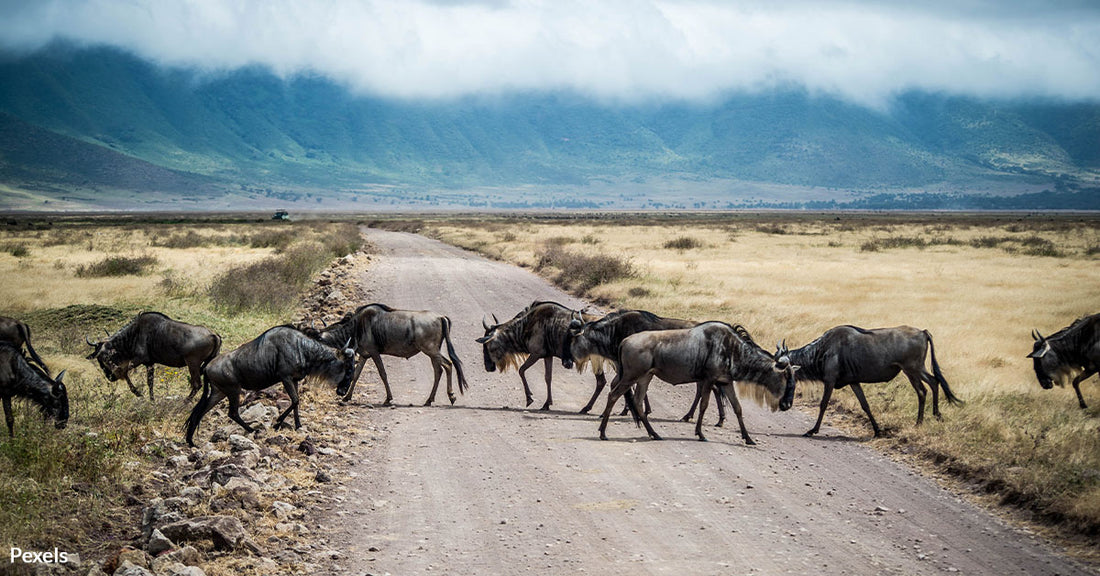How Wildebeest and Wolves are Pivotal in the Fight Against Carbon Change
Matthew Russell
The fight against climate change has often been associated with technological advancements and renewable energy. However, recent studies highlight a different ally in this battle: wildlife.
Species like wildebeest, wolves, and others play a crucial role in sequestering carbon and mitigating climate effects. It holds that the conservation of these species could be pivotal in our climate change strategies.
 Photo: Pexels
Photo: PexelsWildebeests in the Serengeti play a significant role in carbon sequestration.
Wildebeest are The Serengeti's Carbon Managers
The Serengeti's wildebeest population exemplifies the profound impact animals can have on ecosystems. A decline in their numbers in the early 20th century, due to factors like disease and poaching, led to increased vegetation and more intense wildfires.
As the BBC reports, this shift turned the region from a carbon sink to a carbon source. With conservation efforts leading to a rebound in their population, the Serengeti has regained its role as a major carbon absorber.
 Photo: Pexels
Photo: PexelsWildebeests mitigate wildfire risks in the Serengeti, reducing carbon emissions.
The Concept of Animating the Carbon Cycle
Oswald Schmitz from Yale University highlights the importance of "animating the carbon cycle" through rewilding efforts.
"Wildlife species, throughout their interaction with the environment, are the missing link between biodiversity and climate," Schmitz told the Yale School of the Environment. "This interaction means rewilding can be among the best nature-based climate solutions available to humankind."
By restoring animal populations, ecosystems' abilities to store carbon are enhanced. Schmitz's research, published in Nature Climate Change, points to a potential for these efforts to capture significant amounts of CO2, contributing to global net-zero emission goals.
 Photo: Pexels
Photo: PexelsGrey wolves in Canada's boreal forests enhance the forest's carbon storage capacity.
Wolves are Architects of Forest Carbon Storage
In Canada's boreal forests, grey wolves demonstrate a unique role in carbon dynamics. By predating on large herbivores such as moose, they indirectly promote the growth of young trees, thereby increasing the forests' carbon storage capacity, reports the Natural Resources Defense Council. However, the impact of wolves varies across ecosystems.
The Global Impact of Rewilding
The Global Rewilding Alliance emphasizes the broader significance of rewilding in the climate crisis. Adding the right animals to the right landscape not only rebalances ecosystems but also maximizes carbon storage. For instance, as The Guardian reports, the reintroduction of wolves and other carnivores can lead to a significant carbon uptake in forests, offsetting substantial fossil fuel emissions.
 Photo: Pexels
Photo: PexelsWolves' predation patterns in boreal forests indirectly promote young tree growth.
Challenges in Trophic Rewilding
Implementing rewilding strategies is not without challenges. The effectiveness of these initiatives can differ across ecosystems, and unintended consequences must be carefully considered.
As Mother Jones posits, balancing the introduction of species with local ecological and human impacts is crucial for sustainable rewilding programs.
 Photo: Pexels
Photo: PexelsRestoring wildlife populations can double the rate of carbon sequestration in certain habitats.
Integrating Biodiversity and Climate Strategies
The interplay between wildlife conservation and climate mitigation necessitates a unified approach in global policies. Studies show there is a strong connection between biodiversity and climate change, but a gap in the conventions that support this link. Bridging this gap could lead to more comprehensive and effective solutions that address both concerns simultaneously.
The intricate relationship between wildlife and the environment underscores the necessity of incorporating conservation strategies into our climate change mitigation efforts.
While wildlife conservation alone is not a silver bullet, it is a crucial component that complements technological and renewable energy solutions. Acknowledging and harnessing the role of wildlife is key to our collective efforts in combating climate change.
Click below and help us make a difference!

